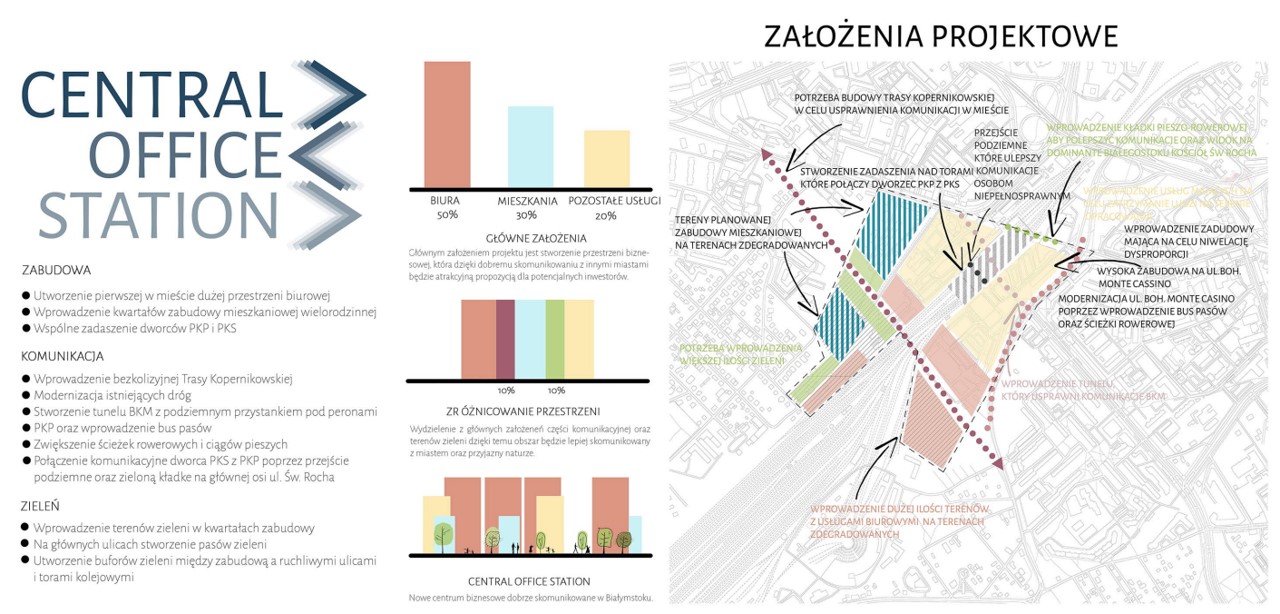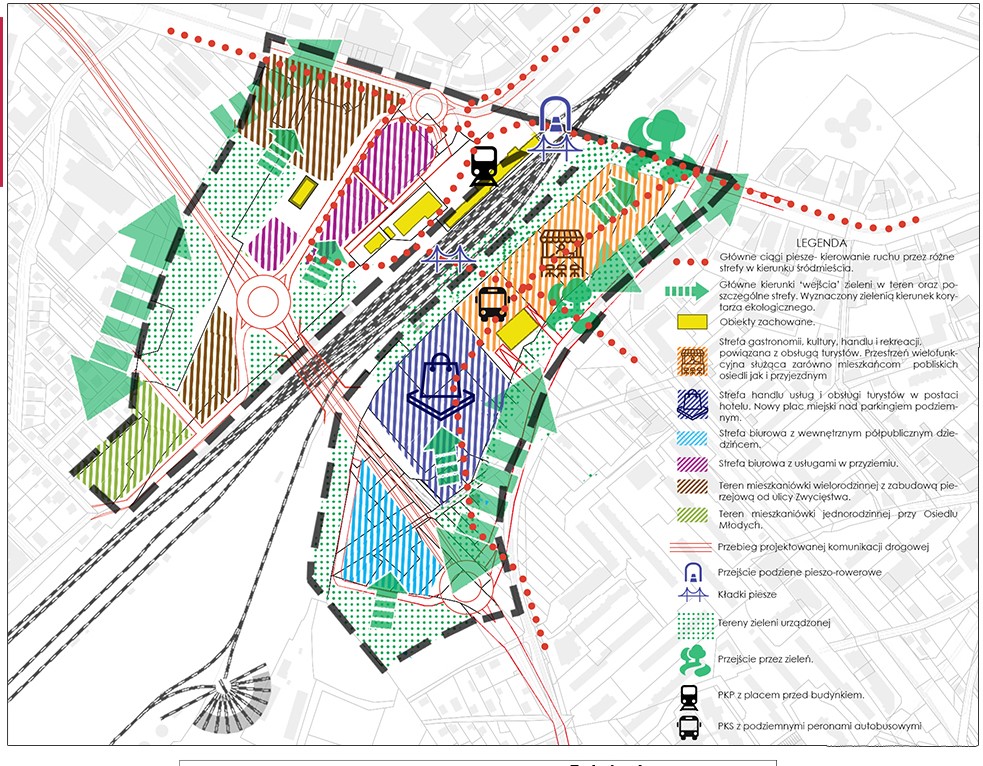From Synthesis conclusions how to move to design solutions?

Authors: BUT students Magdalena Pacewicz, Aleksandra Sadowska
You have defined your idea and the choice of specific directions for your project, and you have gathered your inspiration, and time to design!
Using examples of projects carried out by BUT students, I will explain the steps we take at this design stage. Defining the main ideas, indicating the links between the synthesis of the conclusions of the analyses and the spatial visualization, i.e. the initial concept of the main ideas.


Authors: BUT students Emil Ostrowski, Wojciech Trochimiuk
The conclusion of the synthesis of the analyses in the first work was to notice the disproportion in the functional structure of the designed area. The concept was to balance the proportion of functions and to search for spatial relationships in the designed area.

Authors: BUT students Gabriela Zawadzka, Paweł Matulewicz
Here, we see an exemplary exercise:
- of linking the problems identified,
- linking them into groups,
- finding connections between them,
- indicating them in space,
- defining the main problem,
- the design idea,
- the main design assumptions,
- their spatial solution
- and detailed dispositions.
Students identified as the main problem: Space excluded from active urban life. The response and the idea behind the project was Urban Switch.

Authors: BUT students Gabriela Zawadzka, Paweł Matulewicz
Above, the preliminary dispositions, the search for spatial connections in terms of communication, functionality, greenery, both inside the area and outside.

You can offer detailed spatial proposals for new building masses and the way in which they should be shaped if this is compatible with the idea.
